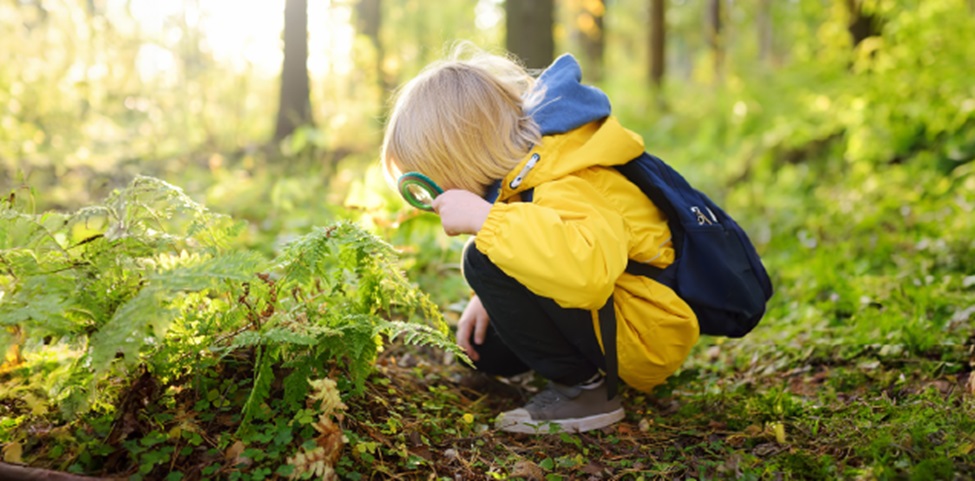04 June 2024
4 min.
Have you been looking for a way to make walks more interesting? Then look no further as this is the ultimate guide for sensory activities within outdoor spaces. Sensory-based play provides more than fun; it also helps support the development of cognitive and fine and gross motor skills by stimulating children's brains.
In this blog, we'll explore just how to take advantage of nature's sensory playground to enrich your child's sensory development. Watch as throughout spring and summer children can learn all about the world through the different flowers, birds and other natural elements.

Scavenger Hunt
Create a list of items to find, such as different coloured leaves, flowers, or insects (or you can print our freebie activity that has listed everything already). This activity encourages observation skills and helps children discover nature’s diversity.
Watch the Clouds
Lay down together outside and see what kind of shapes or animals you and your child can see in the clouds. This relaxing activity sparks imagination and provides a peaceful moment to appreciate the beauty of the sky. To elevate the creativity, get your child to try and draw the things you’ve spotted.
Walk Barefoot
One day, get outside barefoot and feel the texture and temperature of the grass, dirt or sand! Did you know that walking barefoot helps children connect with the earth whilst stimulating the nerve endings in the feet?
Make a Mud Pie
Make a “tasty” outdoor treat when you mix water and dirt. By manipulating the wet mud, children can create various shapes – perfect for tactile exploration and creativity. Pick out some stones and flowers to add a little decor to your “delicious” creations.
Listen to Birds
Sit quietly and try to listen out for different bird calls. Staying still and listening out to nature not only enhances auditory skills but also helps teach children about patience and mindfulness. Our Adjustable Telescope can help avid bird watchers spot their favourite birds from a distance thanks to its 8x magnification.

Create Wind Chimes
Pick up various natural materials like sticks, shells and stones to make your very own wind chime and after creation, have a listen to its gentle sounds. Making and listening to wind chimes enables children to foster their creativity and auditory skills.
Smell the Flowers
On your next walk, take a moment to explore different plants and flowers and compare their scents. This activity sharpens children’s sense of smell and introduces the diverse aromas of nature. Using our Flower Press Art Set, they’ll be able to pick out their favourite flowers and create their own keepsake collection. Use the included paints and brush to turn dried plants into colourful works of art to commemorate your outdoor adventures.

Identify Herbs
Whether you’re at home or outdoors, get together, smell and recognise various herbs like mint, rosemary, or lavender. Learning about herbs helps enhance your child’s senses, it can also help promote a healthier bond with food for picky eaters when they can identify what’s in their food.
Swing from a Rope
Hang a rope from a tree and enjoy the effortless fun of swinging back and forth, alternatively, our Pocket Swing has all the parts you need for a safe and secure swing. This activity is great for promoting physical exercise and offers a thrilling way to experience the outdoors.

Dig for Worms
Use a small shovel (or even little fingers to add an extra sensory touch) to dig in the dirt and locate wriggly worms. Digging and discovering creatures in the soil is not only a great way to connect with nature but it’s also educational as it can teach children about the ecosystem. And for those that want to get up close and personal, our Nature Detective Set includes a 4x magnifying glass, so no bug goes out of sight.

Straightforward yet stimulating, these activities will transform any area into a lively space of sensory play. Watch as these exercises help your children bond with the environment and boost their sensory growth.
Don’t forget to share photos from your outdoor sensory adventures and tag us @hape_uk for a chance to be featured!